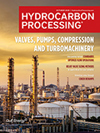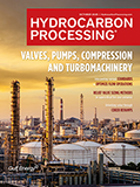Environment & Safety
BP aims to start producing SAF in Australia by 2025
BP is aiming to start producing sustainable aviation fuel (SAF) in Australia by 2025 after converting its oil refinery near Perth to produce renewable fuels.
Renewable identification number prices for ethanol and biomass-based diesel remain high
The RFS program sets annual targets, also called Renewable Volume Obligations (RVOs), for the amount of renewable fuels that must enter into the U.S. fuel supply to increase biofuels use.
Neste delivers first ever CORSIA certified SAF to American Airlines
For the first time in aviation history a CORSIA certified batch of sustainable aviation fuel (SAF) was delivered to a commercial airline.
MHIENG wins contract for a FEED study relating to CO2 capture
The objective of this FEED study is to implement the CO2 capture plant at the repowered Genesee Generating Station Units 1 & 2, owned by Capital Power in Alberta.
Online Exclusive: Accelerating the transition to renewable fuels
Since the transportation industry accounts for roughly 30% of all GHGs in the U.S., new kinds of renewable fuels made from organic sources (such as plant oils or animal waste) are expected to play a leading role in the transition to an environmentally sustainable economy.
World Fuel Services is now an authorized branded distributor of Neste MY Sustainable Aviation Fuel with the first supply location in France
Paris-Le Bourget Airport is the first location in France where World Fuel delivered Neste’s sustainable aviation fuel (SAF) as the authorized branded distributor.
History of the HPI: The 1980s: Oil spike/collapse, liquid crystals, conducting polymers and the rise of AR/VR
Several major impactful events took place in the global oil and gas and petrochemical industries in the 1980s.
Enabling a circular economy delivery model through truckable modularization
As resources become scarcer, and as costs continue to rise, companies are looking for new methods to reduce their material feedstock costs and remain competitive.
HRSG water/steam sampling: Do it right or face potential consequences
Many large industrial facilities—including refineries, and chemical and petrochemical plants—are increasingly turning to co-generation for process steam and power production.
Environment and Safety: Gas flaring: Necessary, or a waste of resources and a source of greenhouse gases?
Flaring is the controlled burning of hydrocarbons at oil refineries, gas processing plants and petrochemical plants.

- Borouge to supply advanced polyolefin solutions for next-generation vehicles 11/18
- ASTM International signs MoU with Gulf Cooperation Council Laboratory Company for Technical Services (GCC Lab TSCo.) 11/18
- Rio Tinto to reduce production at Yarwun Alumina Refinery to extend operational life 11/18
- KBC launches Visual MESA Energy Management System 7.3 11/18
- MHI Compressor secures steam turbine contract at Baton Rouge (U.S.) olefins plant 11/18
- Reliance buys 1 MMbbl of crude from Kuwait's KPC, trade sources say 11/18




